If you want to capture stunning silhouette photography, then keep reading.
Because this article is going to give you step-by-step instructions for gorgeous silhouettes–the kind that really pops off the page.
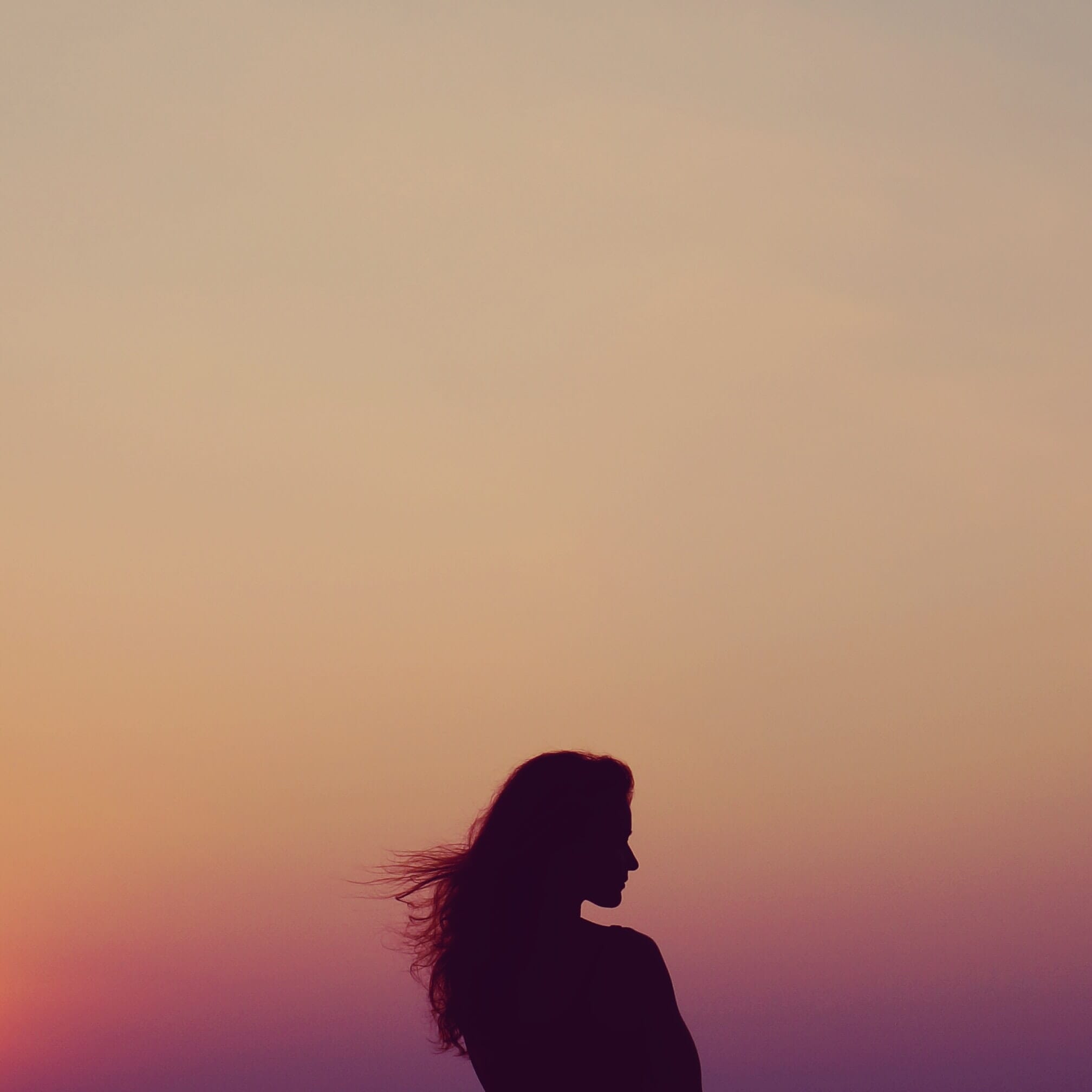
So, to discover the secrets to amazing silhouettes…
…let’s get started!
Silhouette Photography Explained:
What Does Silhouette Photography Involve?
Silhouette photography results in absolutely incredible images, the kind that everyone loves.
But how do you pull off a silhouette photo? How does silhouette photography even work?
Silhouette photography starts by ensuring that you have a very bright background and a very dark subject. You see, your camera cannot handle such tonal extremes–and so it renders your subject as pure black, while keeping your background looking nice and well-exposed.
Like this:
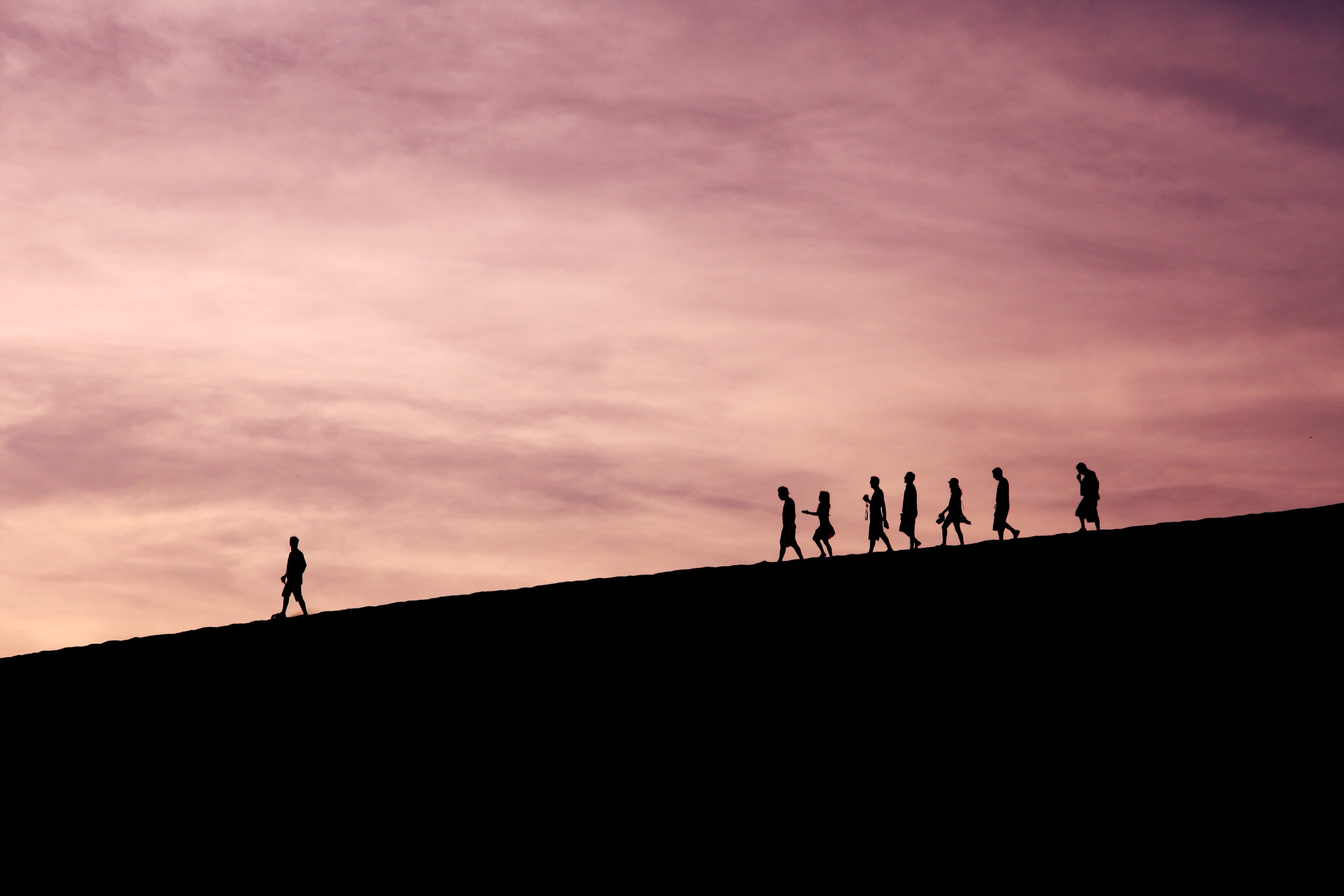
A silhouette.
What you may also realize from this explanation, however, is that silhouette photography isn’t something you can do in your sleep. It’s easy to mess up a silhouette.
For instance, your camera could bright up the main subject, while making the background pure white, in which case you wouldn’t get a silhouette, just a very different type of portrait. This is known as high-key photography.
So, if you want to capture consistently stunning silhouettes, you need to make sure that you keep the main subject dark, while getting a background that’s beautifully rendered.
And while there are many ways of creating beautiful silhouettes, here are a few key tips for making your silhouettes as gorgeous as possible:
Shoot Late in the Day for Beautiful Backgrounds
If you want a strong silhouette shot, then I absolutely recommend you shoot at dawn and at dusk.
That’s how you’ll capture photos like this:

Because while it’s completely possible to achieve silhouettes during harsh, midday lighting, you’re going to miss out on one key silhouette element:
A stunning background.
At sunrise and sunset, you get beautiful colors in the sky, as well as interesting clouds.
But in the middle of the day, at best you’ll get a bright blue or white sky, which generally doesn’t have that same “magic” as a low-light silhouette.
Make sense?
By the way, remember how I said a silhouette needed to have a bright background?
You have to be careful to shoot when the sky is sunny, or you won’t get a true silhouette; instead, you’ll end up with a very moody-style silhouette, with visible clouds in the background and a dark subject.
This isn’t necessarily bad, but it’s also not what a lot of photographers are looking for.
So, if you want an image like this…

…go for sunny skies, not overcast skies.
Shoot With the Sun Behind Your Subject
Here’s another key part of silhouette photography:
If you want a strong silhouette, you’ve got to position the sun behind your subject.
A sun behind your subject will ensure a gorgeous bright background, which will translate to a perfectly rendered silhouette.
But if you position your subject so that the sun is in front, it’ll be lit directly, and you won’t have enough contrast to achieve a stunning silhouette look.
One problem you might encounter is direct sun coming from behind your subject, which is liable to create lens flare effects, like this:
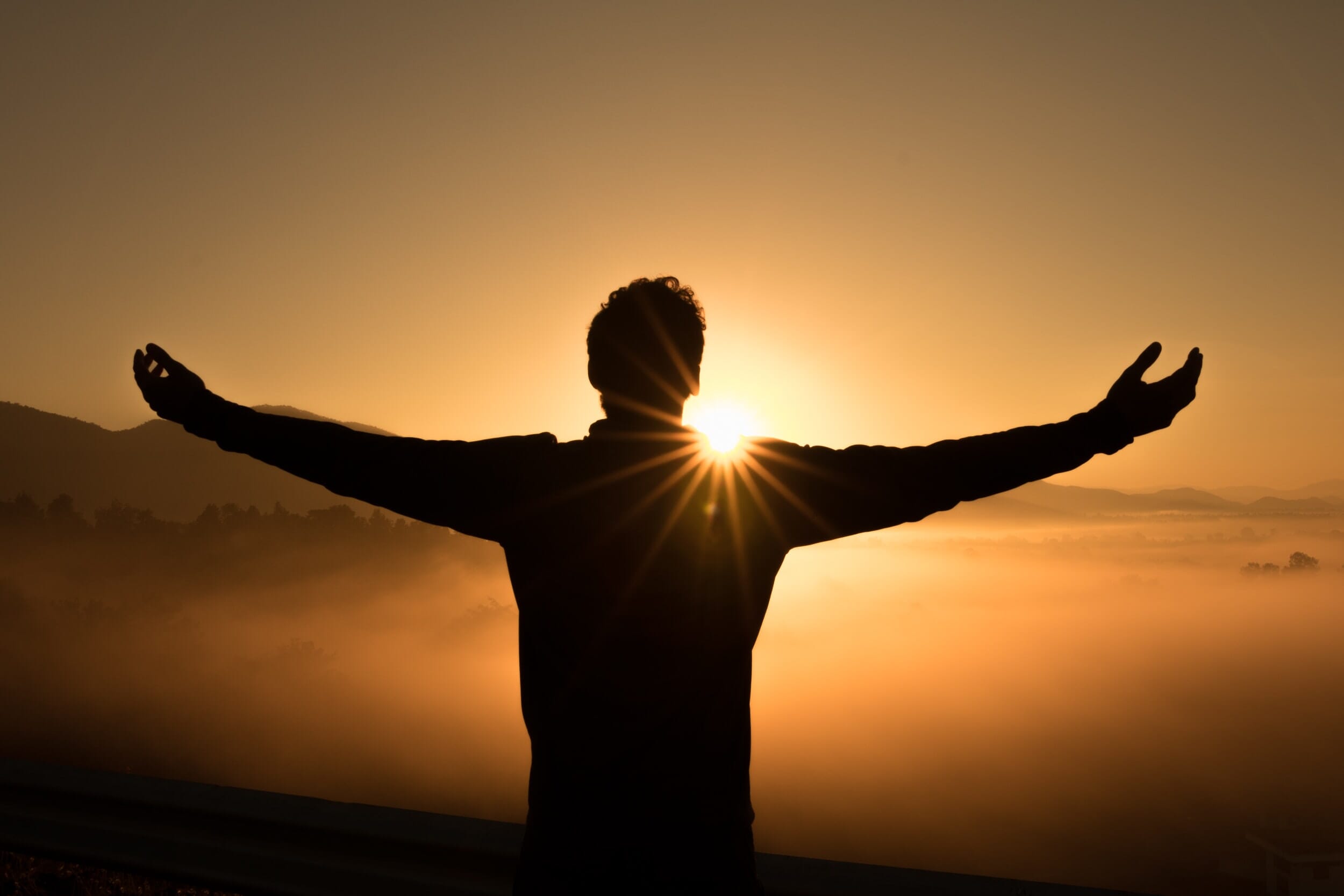
And while you don’t always need to be afraid of this–it can look artistic–there are times when you’ll want to avoid it.
That’s why I recommend you block the sun with an object of some sort within the photo. So position yourself so that your main subject is in front of the sun, or a tree or building is blocking the sun from appearing directly in the image.
Note that you can position yourself so that the sun peeps out from behind your subject, like in the example above.
And if you use a narrow enough aperture, such as f/8, you’ll end up with a very cool sunstar effect!
Find a Low Background and Get Down on the Ground
The difference between average silhouette photography and great silhouette photography is all about framing.
You want your subject to be framed directly against the sky, with as little of the horizon intersecting them as possible.
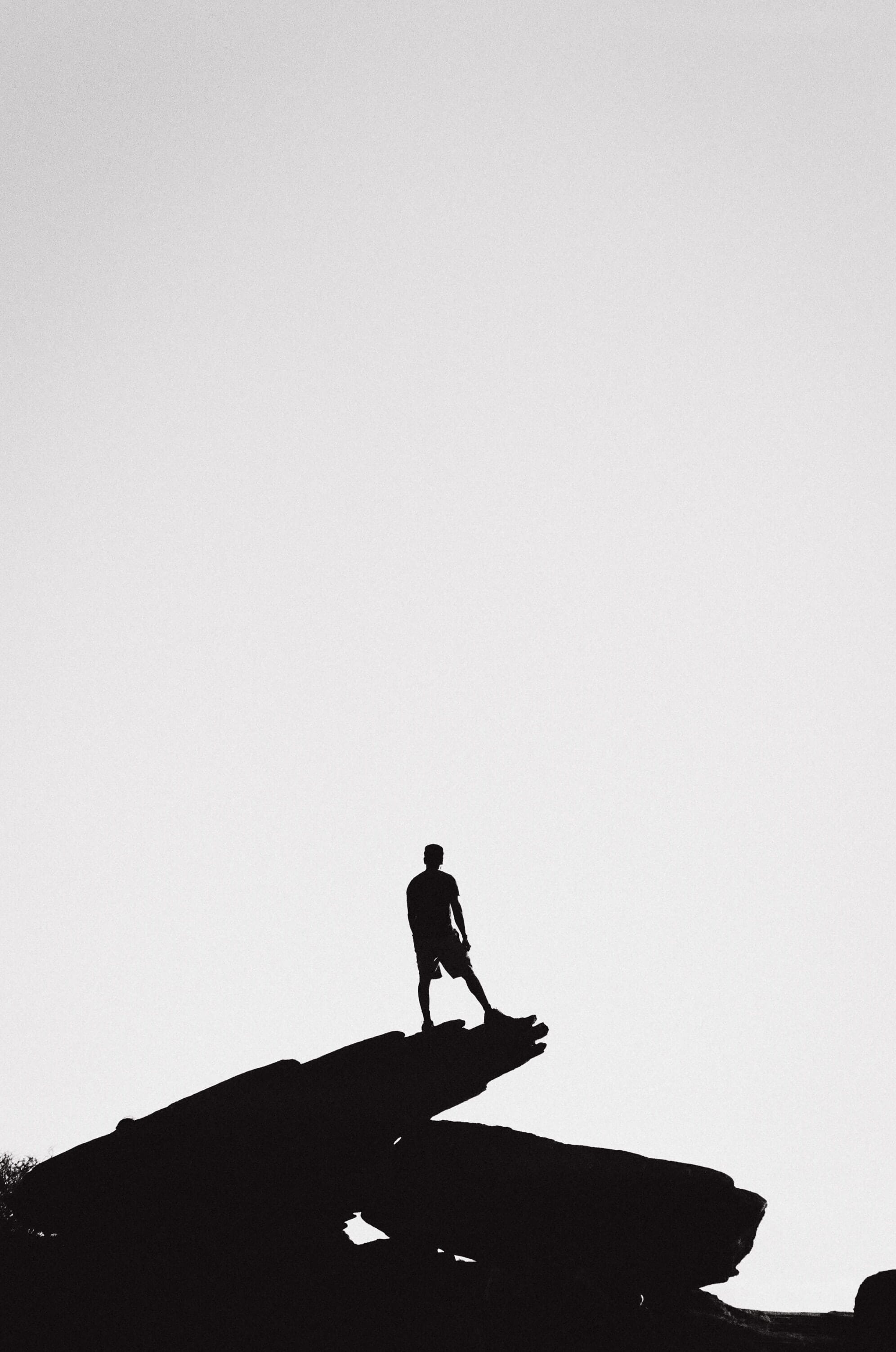
So I recommend you do what you can to shoot in a low area, where the background has very few trees. That way, you can easily put your subject on the sky, and you don’t have to contend with other objects clogging up the horizon.
That’s why beach silhouette shots are so popular; the beach stretches off for miles in every direction, which makes it easy to create nice low silhouette angles.
I also recommend you get down as low to the ground as possible.
Because the lower you crouch, the more sky (and less horizon) you get in the frame.
Make sense?
In fact, get on the ground if you can! You might make yourself a little dirty, sure, but the results will be worth it.
Also read: How to Take Pictures Against the Sun
Isolate Your Subject to Ensure They Pop Off the Page
In the last section, I mentioned how the best silhouettes are framed by the sky, and that you want to avoid other objects clogging up the horizon.
Well, it’s not just distant horizon objects that can interfere with a good silhouette. Since silhouette subjects are all black, there’s no real depth in the scene, which means that any overlapping objects just became weird, distracting shapes.
That’s why you need to isolate your subject as much as possible.
A great technique to ensure isolation here is to make sure your subject is the only outline featured in the shot. If there are any other outlines, move your subject until the distractions are out of the frame.
Or, if you there are no “clean” horizons, then go to another location.
Another alternative is to get rid of the offending outlines in a program such as Photoshop. But that’s time-consuming work, and it’ll be especially hard to do if your subject is actually overlapping with the other objects in the frame.
So, as a rule, avoid overlap.
And, as a guideline, keep your horizon clean of anything but your main subject.
Improve Your Silhouette Photo With a Touch of Post-Processing
If you’ve ever taken silhouette photos and felt like they weren’t as vibrant or awestriking as the type of silhouette you’ve seen online…
…then it probably has to do with post-processing.
You see, silhouette photographers love to boost colors and contrast in programs such as Lightroom, which is how they achieve such interesting results.
Fortunately, this isn’t very hard to do!
Here’s how it works:
Simply import your photo into a post-processing program.
Then take the Saturation slider (and there is always a saturation slider!) and boost it slightly.
Don’t go overboard–this is a recipe for disaster–but make sure your colors become sufficiently vibrant.
Oh, and one last post-processing tip:
If your background doesn’t have as much color or cloud detail as you like, you can always drop the highlight slider down a tad, which will help bring out any lost details.
A Step-By-Step Silhouette Photography Plan
Now that you’re familiar with all the silhouette tips and tricks, let’s talk about how you can quickly achieve a brilliant silhouette in the field, time and time again.
First, as discussed above, you’ll need an environment with a low background. You’ll also want the sun to be low in the sky and positioned behind your subject.
Next, you’ll need to put your camera on Aperture Priority mode (via the main mode dial). This will give you control over a few different settings:
The ISO, which I recommend you keep at 100; this will ensure you get images with as little noise as possible.
And the aperture, which I recommend you put around f/5.6 to f/8, so that you get your subject in focus.
Then change the metering mode to Spot (check your camera manual if you’re not sure how to do this).
Why is this important?
Normally, your camera evaluates a scene based on all of its elements, and then comes up with sort of a “smart” average brightness.
But with a silhouette, you don’t want a boring, gray, neutral average.
You want a dark subject and a beautiful background.
Spot metering makes it so your camera only considers the spot at the very center of the frame when evaluating brightness.
So by carefully positioning the center of the frame on the brightest part of the image (the sky), you can force your camera to make the entire image very dark.
At this point, you’ll need to point your camera at the sky, and half-press the shutter button.
This half-press tells the camera to select its exposure value, ensuring that you get a nicely detailed background and a dark subject.
Finally, while still holding the shutter button halfway (to keep the exposure value locked), compose your shot, and then take the photo.
Check your LCD.
If the silhouette looks great, then great! You’re done.
If the silhouette doesn’t look as dark as you’d like, then go ahead and dial in a bit of negative exposure compensation (via the +/- button on most cameras).
That way, you get a slightly darker silhouette.
Perfect.

Master Silhouette Photography: Conclusion
Capturing stunning silhouettes isn’t the easiest thing to do, but it’s very rewarding.
And if you follow the instructions I’ve given, you’ll be sure to capture gorgeous silhouettes in no time at all!
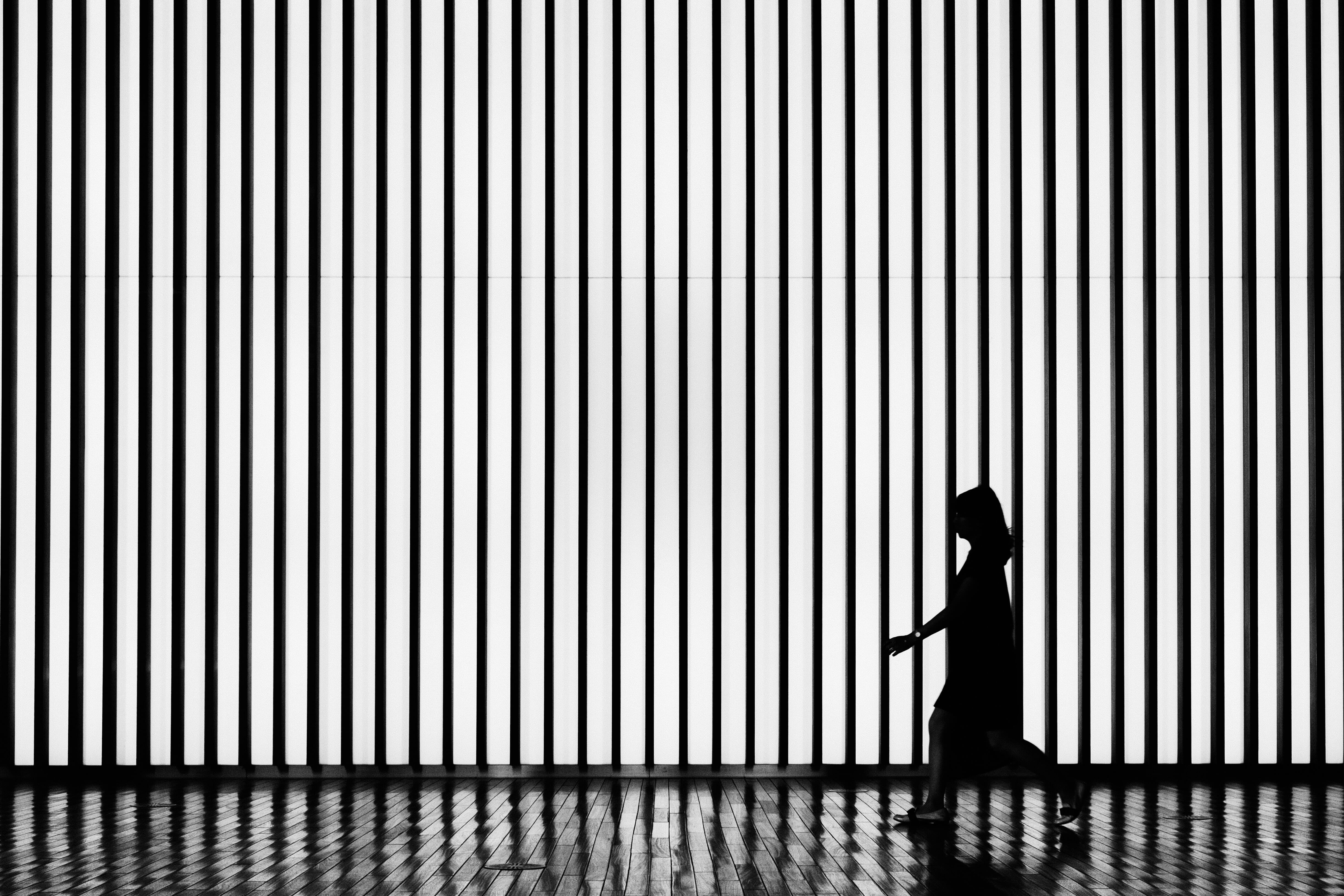
How do you capture gorgeous silhouette photography?
To capture gorgeous silhouettes, you need to carefully spot meter off of the sky, so that you get a very dark subject and a well-exposed background. You also want to isolate your subject as much as possible, while keeping the sky wide and expansive behind your subject. To help achieve this last goal, you can get down low to the ground, and you can also find a location with very few trees (such as a beech or a plain). Also, use Aperture Priority mode to set your aperture and a low ISO; your camera will set the ISO. If the shot comes out too bright, you can always add in some negative exposure compensation to darken it down.
What is the best aperture for silhouette photography?
You’ll want an aperture that keeps your main subject sharp, at the very least, so f/5.6 is often a good starting point. If your subject is close to the camera lens and you want the background in focus, then you’ll want to narrow your aperture further, to f/8 and beyond. However, if your subject is far off in the distance and the scene has no real depth, it’s fine to use your lens’s maximum aperture.
What ISO should you use for silhouette photography?
I recommend a low ISO. The higher your ISO, the noisier your shot will appear, and noise does not look good (especially in a silhouette image). Because a silhouette image requires very little light, you can usually shoot at ISO 100 without any negative impact on your photos.
How do I make a silhouette photo?
To make a nice silhouette image, you’ll need to position your subject in front of a bright background, and you’ll want to do it around dawn or dusk. Try to isolate your subject as much as possible, and get low to the ground so the background is made up of sky. Use spot metering to expose for the background (which I discuss more in the article!), and take your shot!
Do you need to post-process your silhouette images?
Absolutely not! You definitely don’t have to post-process your silhouette images if you want them to look good. However, post-processing will allow you to get more vibrant colors, as well as richer dark tones, so it might be worth considering. Note that you can do basic post-processing, such as boosting the saturation and reducing the highlights, in pretty much any image editing program, paid or free.
How do you get vibrant silhouette colors?
One way to achieve vibrant silhouette colors is to shoot when the sky offers the best colors: at sunrise and sunset (just before and just after). But you can also strengthen silhouette colors with a bit of post-processing, which photographers do all the time on their silhouettes; for instance, you can boost the Saturation slider and drop the exposure slightly. That way, you’ll get powerful, awestriking colors.
